|
Albert Square
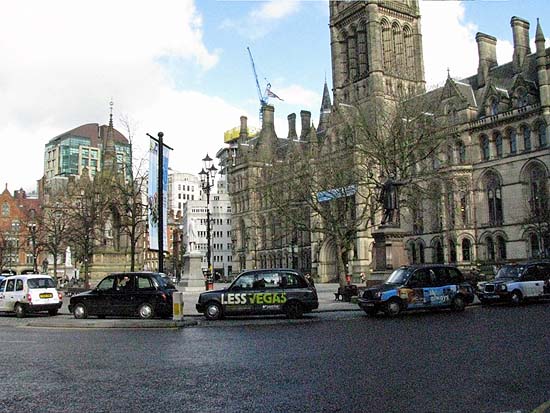 Dominated by Waterhouse's Town Hall Albert Square today is a wide pedestrian plaza that is home to a number of important monuments. 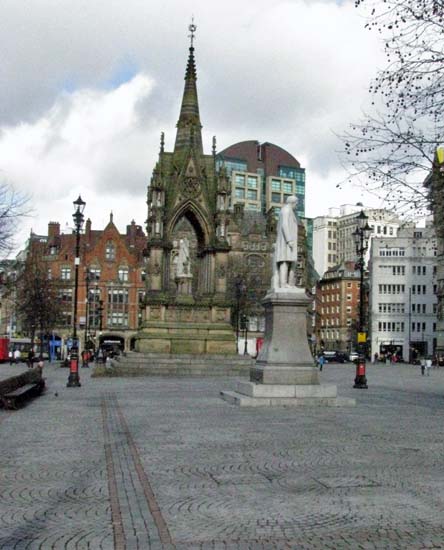 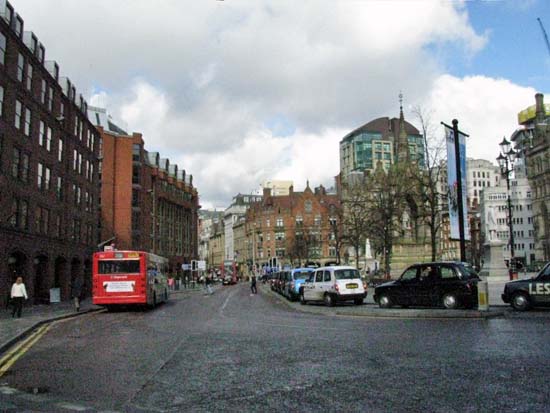 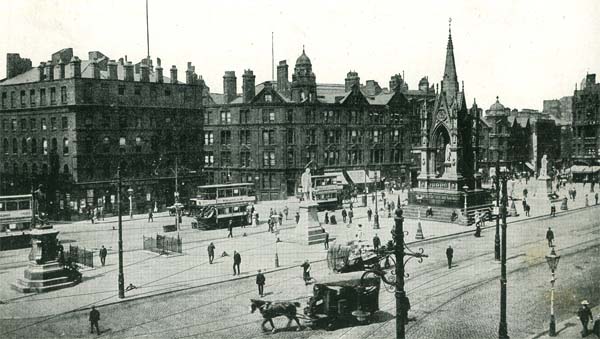 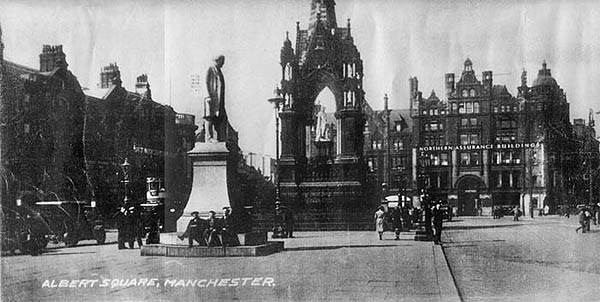 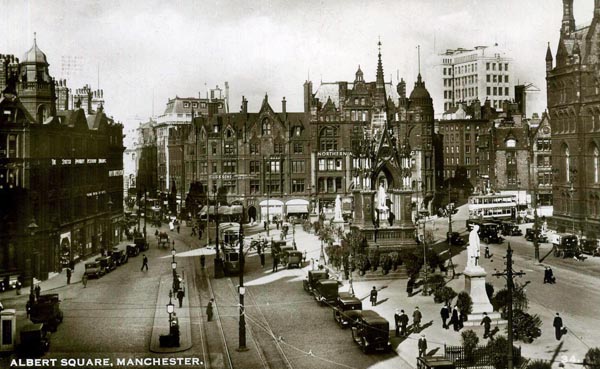 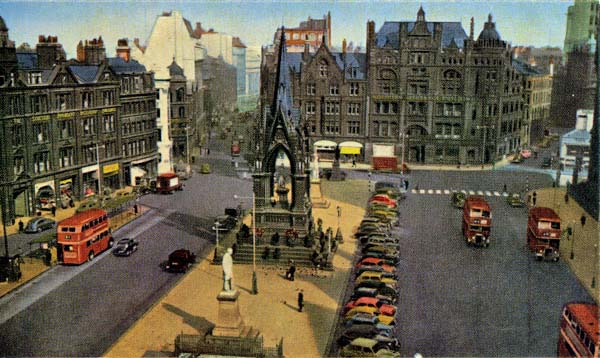 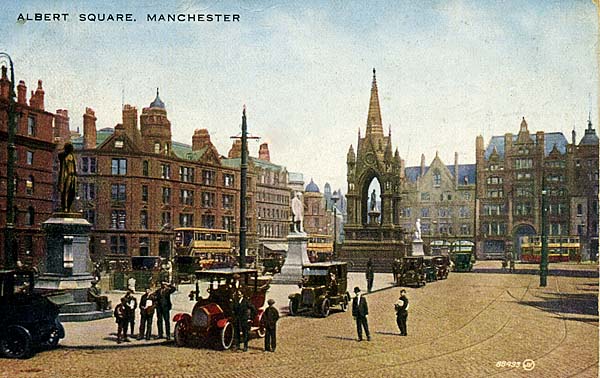  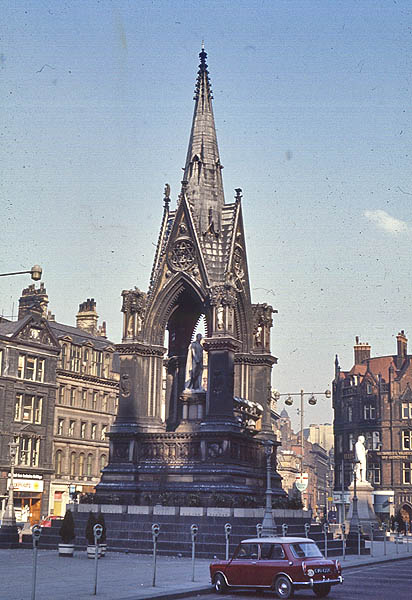 Today it is much more of a people place and often a venue for important meetings and events. At Christmas a large German Market occupied the square.  Mount Street enters the
square from the south and on the corner is St Andrews
Chambers built for the Scottish Widows Fund Life
Assurance Company.
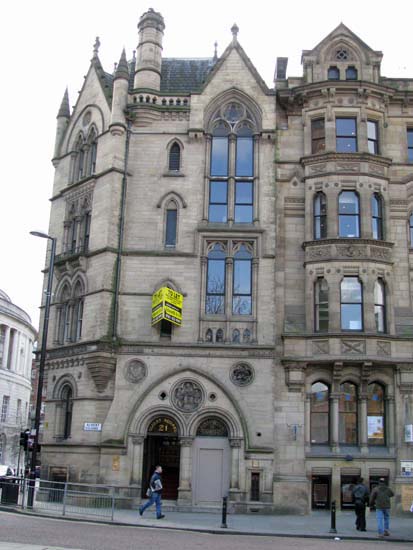 Next door is Carlton House built in 1872 by Clegg and Knowles 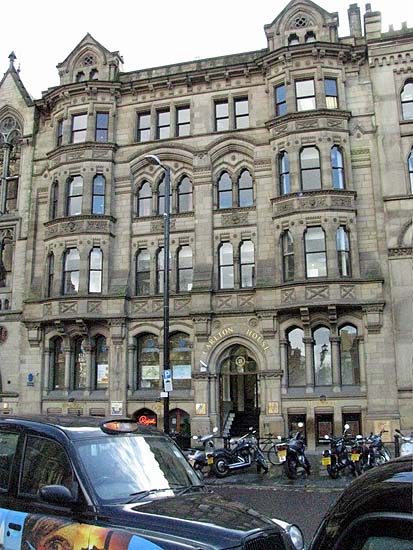 On the corner of
Southmill Street and Lloyd Street in the Southwest
corner of the square is Lloyd House designed by Speakman
and Charlesworth in 1868. It was originally the
Shipping Offices and Packing Company.
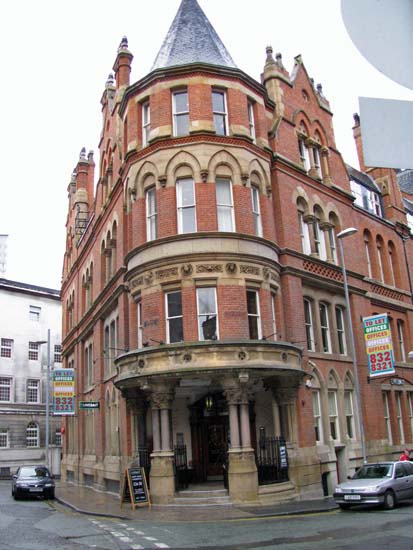 In the northwest corner
of the square on a narrow site between John Dalton
Street and Tasle Alley stands a four storey building
built in 1919 by Perc Scott Worthington for the
Liverpool & London & Globe Insurance Company.
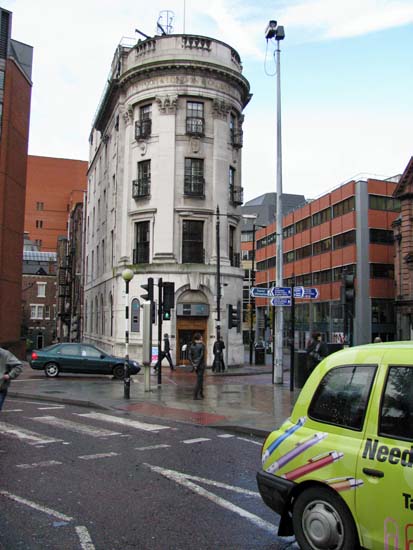 On the north side of the
square across Princess Street is the Northern Assurance
Building designed by Waddington and Dunkerley in 1902.
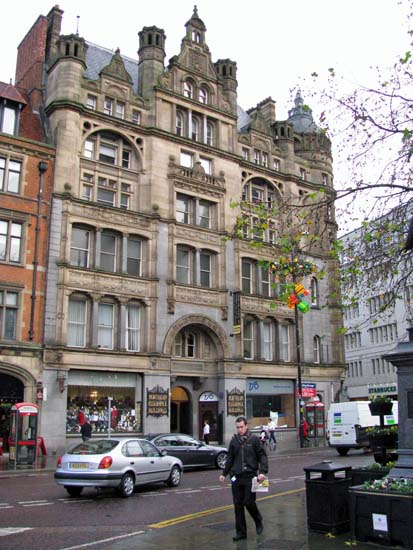 Within the square are a
number of statues including: John Bright, political
campaigner and MP for Durham and Manchester;
 Abel Heywood,
publisher, radical, and sometime mayor of Manchester;
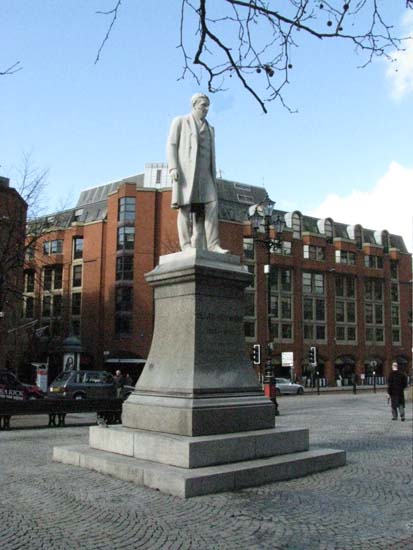 William Gladstone,
former Prime Minister.
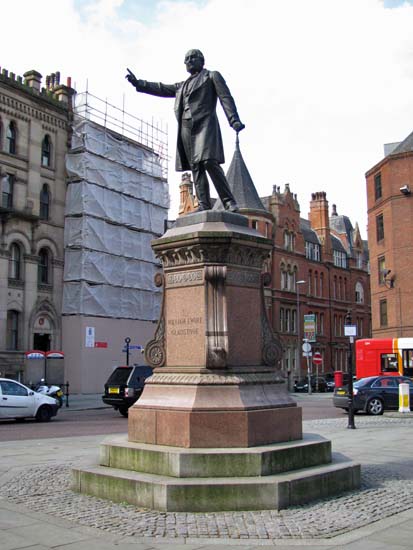 The most prominent monument though is the Albert Memorial to Queen Victoria's consort Albert, after whom the square is named. Designed by Thomas Worthington again, with the statue of the prince by Matthew Noble.  In the square outside of
the town hall is a fountain that was designed by Thomas
Worthington, the architect of the Crown Court building
on Minshull Street, and with sculptures by John Cassidy.
The fountain was commissioned for the Diamond Jubilee of
Queen Victoria. It was completed in time for the
celebrations in 1897. The fountain was the centre of
attention in 1894 when it was connected up to the water
supply brought to Manchester by a Victorian engineering
masterpiece, the Thirlmere Aquaduct. To celebrate the
arrival of this water supply officials and the public
gathered around the fountain and watched the first water
gushing out.
Thirty years after it
was placed in the square, it was moved to Heaton Park
where over the following 70 years it fell into
disrepair. After being restored, it was returned to the
square once more in 1997.
 Close Window |